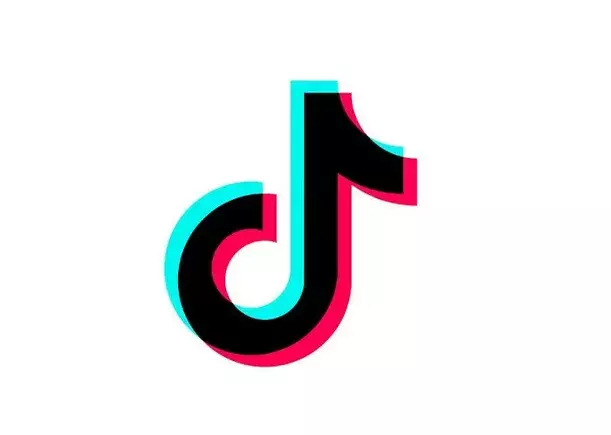In a digital landscape characterized by rampant misinformation, TikTok has taken a significant step towards accountability with its latest Transparency Report. Published in compliance with the EU Code of Practice, the report sheds light on the platform’s efforts to tackle disinformation and maintain the integrity of the user experience. The report, filled with statistics and insights, is a clarion call to the digital community to recognize the battles waged against misinformation, manipulation, and the emerging challenges linked to artificial intelligence (AI). With trends shifting rapidly, TikTok’s comprehensive analysis from the second half of 2024 provides crucial insights into the evolving nature of digital media and the responsibility that comes with it.
Political Advertising: A Necessary Dismissal
TikTok’s policy to ban political ads aligns with its intention to uphold a neutral platform for creative expression rather than a battleground for political rhetoric. The removal of over 36,740 political ads signals that the app’s growing popularity has not escaped the attention of political groups eager to exploit its vast reach for campaign purposes. However, this figure also highlights the ongoing struggles TikTok faces in policing its platform against misuse by parties that seek to leverage user engagement for political gain. The sheer volume of removed content suggests that vigilance is more crucial than ever, especially as TikTok weaves deeper into the social fabric of its user base.
Moreover, the continuous attempts by political entities to infiltrate traditionally non-political platforms like TikTok reflect broader societal behaviors. Audiences are no longer passive consumers; they engage actively and form opinions, often aligning with trends rather than affiliations. This evolving landscape necessitates a robust framework on TikTok’s part to combat misuse and hold accountable those who attempt to circumvent its guidelines for their objectives.
The Fight Against Fake Engagement
The report indicates that TikTok took diligent steps against fake profiles, eliminating nearly ten million accounts alongside 460 million fraudulent likes. These actions are pivotal in preserving the authenticity of interactions within the app. By dismantling misleading metrics that could influence content ranking, TikTok is positioning itself as a defender of genuine user engagement. The effort reflects a serious commitment to fostering an environment where users can rely on the authenticity of the connections they make and the content they consume.
However, while the eradication of fake accounts is commendable, it also raises questions about how such figures emerged in the first place. The digital landscape operates on the cycles of creation and decay, with the allure of shortcuts often leading to unsustainable growth tactics. It remains to be seen how TikTok will apply the lessons learned from this surge of fake engagement to prevent similar occurrences in the future.
AI-Generated Content: A Double-Edged Sword
The rise of AI-generated media presents a unique set of challenges for digital platforms, and TikTok’s report showcases its proactive stance in this arena. The removal of over 51,000 AI-generated videos underlines the importance of distinguishing between legitimate content and manipulative deepfakes. By adopting technologies like C2PA Content Credentials, TikTok lays groundwork for a transformative approach to ensuring credibility in the realm of AI content.
Moreover, the collaboration with other platforms to thwart deceptive AI use during election cycles emphasizes TikTok’s commitment to safeguarding democratic processes. While other platforms, like Meta, report a relatively minor impact of AI-generated content on their integrity efforts, TikTok’s vigilance illuminates the spectrum of potential risks that still exist. As technology evolves, so must the mechanisms employed by these platforms, keeping pace with an ever-altering digital landscape.
The Role of Third-Party Fact-Checking
A noteworthy aspect of TikTok’s approach involves its integration of third-party fact-checking partners. The enlistment of 14 International Fact-Checking Network (IFCN)-accredited entities marks a significant investment in tackling misinformation. By expanding its partnerships and outreach to new regions, TikTok demonstrates an understanding that no single entity can tackle misinformation alone.
Interestingly, the data indicates that users were 32% less likely to share unverified claims after being exposed to notifications, reinforcing the idea that a collaborative effort with fact-checkers can contain harmful narratives. Unlike the community-derived model many other platforms are adopting, TikTok’s reliance on trained professionals reflects a commitment to reliability over popularity. This distinction could serve to create stronger defenses against misinformation, particularly as users become more willing to engage critically with content when guided by reliable sources.
Confronting the Challenges Ahead
TikTok’s Transparency Report illuminates the ongoing efforts necessary to promote truthful engagement while managing the complexities of a rapidly changing digital landscape. As fake accounts, malicious uses of AI, and disinformation persist, the platform’s dedication to transparency and strict enforcement protocols will ultimately dictate its success in safeguarding its community. By wielding accountability measures and embracing collaborative frameworks, TikTok has a unique opportunity: not just to elevate its standing among users, but to set a new standard for how digital platforms navigate the intricate dance of information in the modern age.
In striving for a more transparent ecosystem, TikTok does not just fulfill regulatory requirements; it actively shapes the future of online interaction, one fact-checked claim at a time. Ultimately, the question remains—can TikTok, along with its peers, forge a path toward a healthier social media ecosystem, or will it become ensnared in the very disinformation it seeks to combat?


Leave a Reply